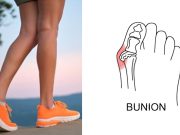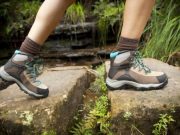Looking for the perfect trail running shoe fit? Check out our expert tips to ensure your shoes fit well and keep you comfortable on your next adventure. Discover the importance of size, width, heel fit, and toe box space, and learn how to choose the right shoes for your unique running style.
How Should Trail Running Shoes Fit:
Proper fit is crucial for trail running shoes as it can affect your performance and reduce the risk of injuries. Here are some tips on how trail running shoes should fit:
- Snug fit: Trail running shoes should fit snugly but not too tight. Your feet should not slide inside the shoes, but there should be enough room for your toes to wiggle. Your heels should also fit snugly without slipping out of the shoes.
- Adequate space: Make sure there is enough space for your feet to expand during long runs or when running downhill. Your toes should not feel cramped or squished together.
- Supportive fit: Trail running shoes should support your feet and prevent them from rolling or twisting. Look for shoes with a secure and adjustable lacing system to keep your feet in place.
- Flexibility: Your trail running shoes should be flexible enough to allow your feet to move naturally. This will help you maintain good form and balance on uneven terrain.
- Comfort: Your trail running shoes should be comfortable to wear, and there should be no points of discomfort or pressure. Try on the shoes with the socks you plan to wear when running.
- Terrain-specific: Consider the terrain you will be running on when choosing trail running shoes. For example, shoes for rocky terrain may have a stiffer sole and more cushioning, while shoes for muddy trails may have better grip.
Read More: 10 Best hiking shoes for Women
Read More: 11 Best Hiking Shoes for Men
Overall, trying on different shoes and finding the one that fits you best is essential. Feel free to walk around or jog to test the shoes’ fit and comfort before purchasing.
































